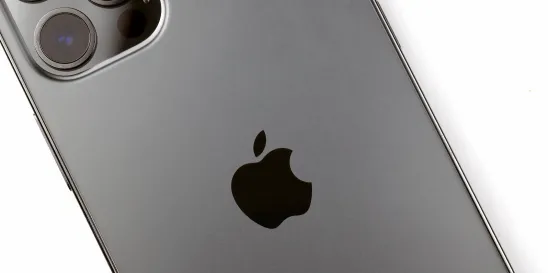In Corephotonics, Ltd. v. Apple Inc., the Federal Circuit partially signed off on Apple’s win before the Patent Trial and Appeal Board (PTAB) invalidating a number of patents owned by Corephotonics relating to dual-aperture cameras and methods of using the images from both lenses when zooming while capturing video to prevent “jumping” (U.S. Patent Nos. 9,661,233, 10,230,898, 10,326,942, and 10,356,332 referred to here as the Camera Patents). One of the main questions on appeal, according to Corephotonics, was whether the PTAB erred in finding Apple’s prior art analogous to the Camera Patents. Unfortunately for Corephotonics, the Federal Circuit did not see the image in the same way as presented by the patent owner.
Pre-Appeal
After Corephotonics sued Apple for infringement of the Camera Patents in the Northern District of California in 2017, Apple shot back and filed a number of inter partes review (IPR) petitions challenging the validity of all of the claims asserted by Corephotonics (Apple IPRs). In all of its petitions, Apple included grounds for unpatentability citing a combination of prior art references, including U.S. Patent No. 8,081,206 to Martin and U.S. Patent Publication No. 2012/0026366 to Golan. Briefly, Martin teaches ways to make 2D images look like 3D images by “critically aligning images” captured from different points of view. Golan teaches camera systems with a one-time calibration process that corrects for the different points of view of two lenses. Specifically, Golan’s calibration technique stops an image from “jumping” while digitally zooming in or out (i.e., when switching from a wide lens to a telephoto lens and vice versa).
Despite the fact that Corephotonics filed preliminary responses to the petitions, Corephotonics waited until after the PTAB instituted the Apple IPRs to complain about purported flaws in Apple’s analogous art arguments — namely that Apple’s contention regarding the same field of endeavor was at least ambiguous because it appeared that Apple was comparing Martin and Golan to each other and not the Camera Patents. In response to Corephotonics’ criticism, Apple sharpened its position in its reply briefs stating that the Camera Patents, Golan, and Martin are all in the same field of endeavor. Apple also argued that Martin and Golan were pertinent to the problem faced by the inventors of the Camera Patents. In its final written decision, the PTAB agreed that Martin was “reasonably pertinent to the problem” and ultimately found all challenged claims of the Camera Patents obvious over Martin and Golan (along with other references).
The Appeal
On appeal, Corephotonics argued that the Board improperly (procedurally) allowed Apple to cure its legally flawed analogous art contention made in its petitions and then further erred by making analogous art findings that were different from what Apple promoted in its petition and reply. The Federal Circuit reviewed the PTAB’s legal determinations de novo.
Recall that, according to Corephotonics, Apple first made its analogous art argument in its replies — not its petitions. While Corephotonics believed the lateness of Apple’s analogous art arguments to be an issue, the Federal Circuit did not agree. Instead, the appellate panel clarified that “petitioners may use a reply to respond to such [deficiencies in analogous art] arguments raised by patent owner.” More specifically, Apple’s arguments and evidence in its replies were not considered to be part of a new theory of unpatentability, but were instead responsive to Corephotonics contentions regarding analogous art. In fact, as further explained by the appellate panel,
[t]here is nothing “entirely new” about arguing that the same combination of prior art references identified in a petition as being in the same field of endeavor as the patent being challenged are also pertinent to the same problem faced by the inventor of the challenged patent.
In other words, the appellate panel found no procedural error in the PTAB’s acceptance of Apple’s analogous art arguments at the reply phase because those arguments merely bolstered its previous arguments. In contrast, had Apple brought forth a new prior art reference in its replies for a contention that was meaningfully distinct from what was identified in the petitions or that was not in its petitions at all, the PTAB would not have been able to invalidate the Camera Patents based on that new prior art because Apple would have violated the “newness” and “responsiveness” procedural restrictions.
Corephotonics also substantively disagreed that Martin and/or Golan were analogous art. Since the determinations that each of the cited prior art was analogous art are issues of fact, the Federal Circuit reviewed the PTAB’s findings for substantial evidence. While the appellate panel deemed the PTAB’s determination that Golan was in the same field of endeavor (and, thus, analogous art) to be supported by substantial evidence, it found the PTAB’s determination that Martin was reasonably pertinent to the problem to be quite blurry. In this aspect, because the PTAB made an undisputed error when providing its conclusion regarding Martin’s analogous nature, the Federal Circuit remanded to the PTAB for it to explain why Martin is (or is not) analogous art and to determine how this finding affects its overall obviousness conclusion.
The PTAB’s overall obviousness conclusion may change in part or as a whole if it did, as suggested by the Federal Circuit, confuse “fields of view” and “points of view” when assessing the problem addressed by Martin and its analogous nature and Martin then becomes unavailable as prior art. Or, the PTAB may explain that its error was indeed “a mere ‘typographical error’ and . . . harmless,” rationalize why Martin remains analogous art, and leave its obviousness conclusion intact. We will have to wait to see once the picture more fully develops.
Nevertheless, this decision provides some good reminders regarding analogous art and obviousness:
- Prior art references are applicable to the obviousness inquiry only when they are analogous to the claims being challenged. This decision demonstrates why it is important to focus on even the smallest of distinctions when arguing that a reference is or is not analogous art since it may make a difference in whether a reference is able to be used in an obviousness argument.
- Showing that a reference is analogous requires satisfying at least one of two separate tests: “(1) whether the art is from the same field of endeavor, regardless of the problem addressed and, (2) if the reference is not within the field of the inventor’s endeavor, whether the reference still is reasonably pertinent to the particular problem with which the inventor is involved.” While field of endeavor and pertinent problem are separate tests used to determine whether a reference is analogous prior art, these two tests do not provide independent, different grounds for obviousness or new rationales.




 />i
/>i

